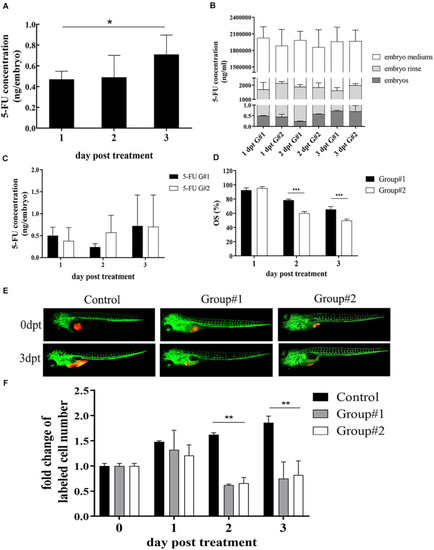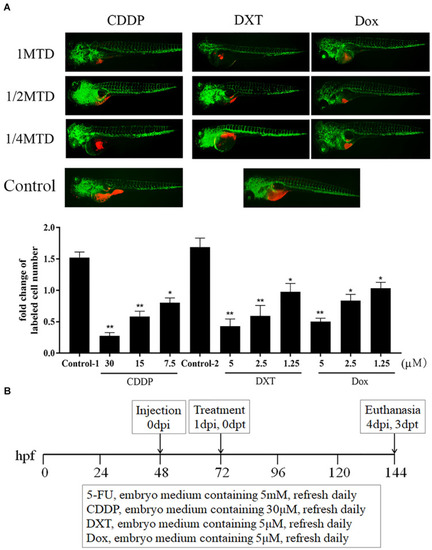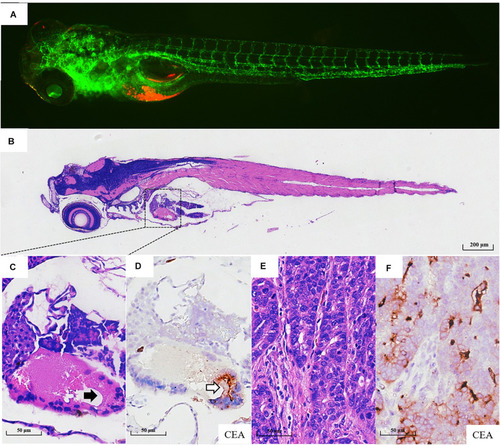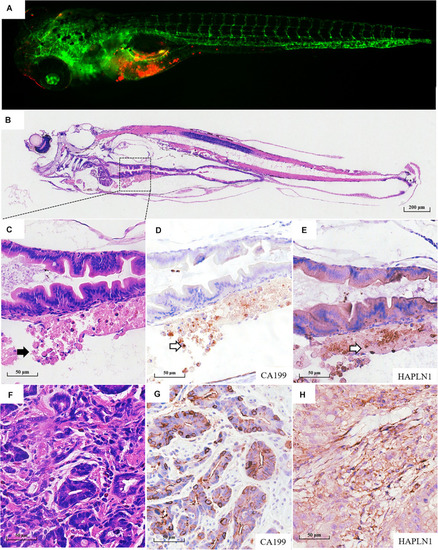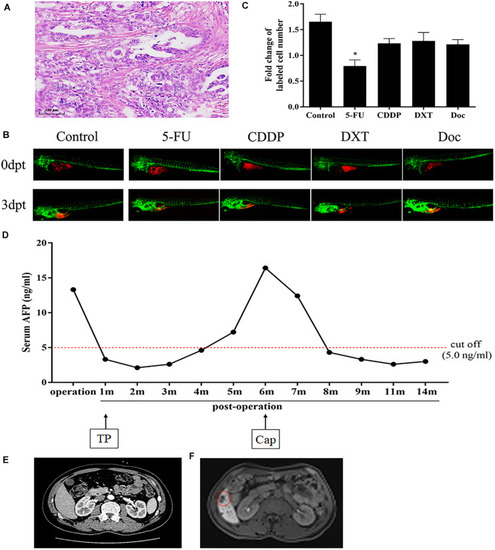- Title
-
Prediction of Sensitivity and Efficacy of Clinical Chemotherapy Using Larval Zebrafish Patient-Derived Xenografts of Gastric Cancer
- Authors
- Zhai, J., Wu, J., Wang, Y., Fan, R., Xie, G., Wu, F., He, Y., Qian, S., Tan, A., Yao, X., He, M., Shen, L.
- Source
- Full text @ Front Cell Dev Biol
|
Optimization of 5-FU dosing in zebrafish. |
|
CDDP, DXT, and Dox dosing in zebrafish. (A) zCDXs engrafted SGC7901 cells (dyed with red fluorescence using DiL) were treated with CDDP, DXT, or Dox at their 1/4, 1/2, and 1 MTD, and they inhibited cell proliferation in a dose-dependent manner (control-1, embryo medium for CDDP assay; control-2, embryo medium containing 0.1% DMSO for DXT or Dox assay) (*P < 0.05, **P < 0.01 vs. control-1 or control-2). (B) A protocol for preclinical chemosensitivity test in the zebrafish larvae cancer model was developed. |
|
Pathological assays of the engrafted zebrafish for patient #43. |
|
Pathological assays of the engrafted zebrafish for patient #55. |
|
Chemosensitive profiling in zPDXs of patient #20 and its clinical relevance. |

